Training in Kazakhstan
School of Humanities and Culture, College of Humanities
Mandai Haruka (3rd year)
1. Image of Kazakhstan before the trip
Prior to my trip, I knew very little about the Republic of Kazakhstan. Unless one studies Central Asia in depth at a university or other institution, it is rarely covered in high school world history classes, so it can be said that there are almost no opportunities to learn about Kazakhstan in Japan. I was only aware that the Silk Road passed through it, that it was a country of nomadic peoples, and that it was part of the Soviet Union. I didn’t know even the most basic information about Kazakhstan, such as its size, population, capital, or the fact that it is a Muslim-majority country. Because it is a country that is not very familiar to Japanese people and that we know very little about, I decided to participate because I thought that if I missed this training opportunity, I would never visit again.
2. Differences between Kazakhstan and Japan
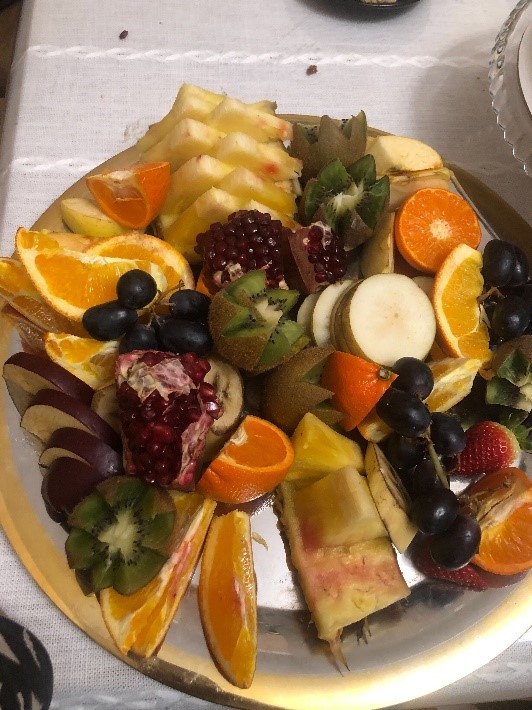
While living with my host family, I realized that religion was more deeply rooted in their lives than it is in Japanese people. Unlike the knowledge I had of Muslims and Islamic countries up until now, there is not much strictness regarding religious practices. For example, women are free to wear headscarves and expose their hands and feet, drinking alcohol is not prohibited, and praying five times a day is not mandatory, among other things. On the other hand, there were also occasions where we could see the influence of Islam on everyday life, such as absolutely not eating pork and fasting during Ramadan. In particular, there seems to be strong resistance to eating pork, and many Kazakh people asked me, “Do you eat pork, Haruka?” In Japan, beef, pork, and chicken are mainly eaten, but Muslims in Kazakhstan do not eat pork thoroughly. There are no pork dishes in restaurants either. When I visited an Asian restaurant, I was given a choice of beef, chicken, or salmon for my gyoza filling, but pork was not an option. This was very impressive because in Japan, it is common to use pork or a minced meat blend that includes pork. In addition, dishes that would normally be made with pork in Japan were often made with meat from other animals. Regarding fasting, I understood that although its implementation is left up to the individual, it is considered very important. There were days when Muslims would gather at the host family’s house and eat a sumptuous dinner together (Photo1). During the meal, all the women wore scarves to cover their heads. Some men wore traditional costumes. On the other hand, some people attended in casual attire. Although the religious practice of Islam is largely left to the individual, it seemed that religion and life were definitely more connected than Japanese people, who often find it difficult to respond when asked about their faith.
Related to the above, Kazakhs have a strong sense of being a multi-ethnic nation. People of various appearances can be seen in the university and in the city. Kazakhstan has a mix of people of various ethnic backgrounds from the looks of it, including Central Asian, European, East Asian, and Indian. Because of the overwhelming majority of “Japanese” in Japan, people of different ethnic backgrounds are often easily identified by their appearance. Therefore, it seems that there is almost no way to talk to a “foreign” looking person in Japanese in town. However, there are many people in Kazakhstan who look like Japanese. I myself have been mistaken for a Kazakh many times and spoken to in Kazakh or Russian on the bus or at university. It is only when they see me confused because I don’t understand the language that they realize that I am a foreigner. It seemed to be something that would not happen very often in Japan, and it was very refreshing. Ethnic diversity and uniqueness seem to be respected in Kazakhstan, where a multi-ethnic mix is the norm. It is natural that there are various ethnic groups in the regional studies classes, in the exhibits at the Central Museum of Kazakhstan, and in conversations with host families, and it is also inevitable that each will live together. Despite the fact that Muslims are the majority in the country, the Zenkov Cathedral is located not far from the central mosque and functions as a church, not just a tourist attraction (Photos2 and 3). It seems to symbolize the multi-ethnic coexistence of Kazakhstan, although this may be influenced by the historical relationship with Russia. Until now, the image of multi-ethnic countries has been dominated by the United States and Canada. Kazakhstan is undoubtedly a multi-ethnic country, but its origins are different from those of the United States or Canada. The Kazakhs are nomadic people, and historically it is a place where many ethnic groups have traveled. It may not be unnatural from a historical perspective for many ethnic groups to set foot on Kazakh soil.
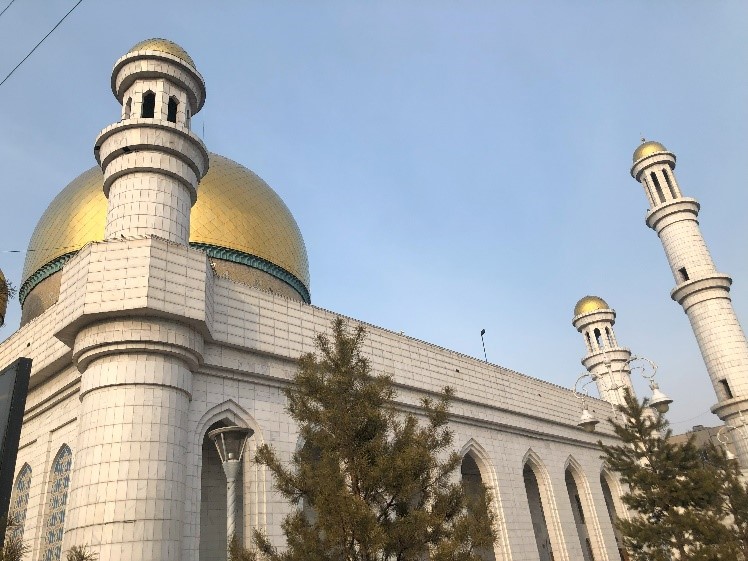
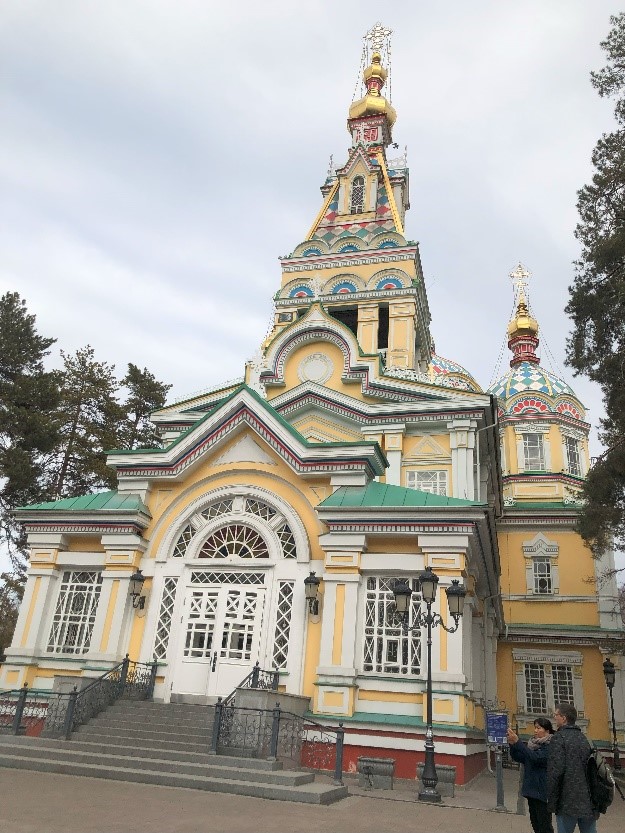
3. Studying at Al-Farabi Kazakh National University
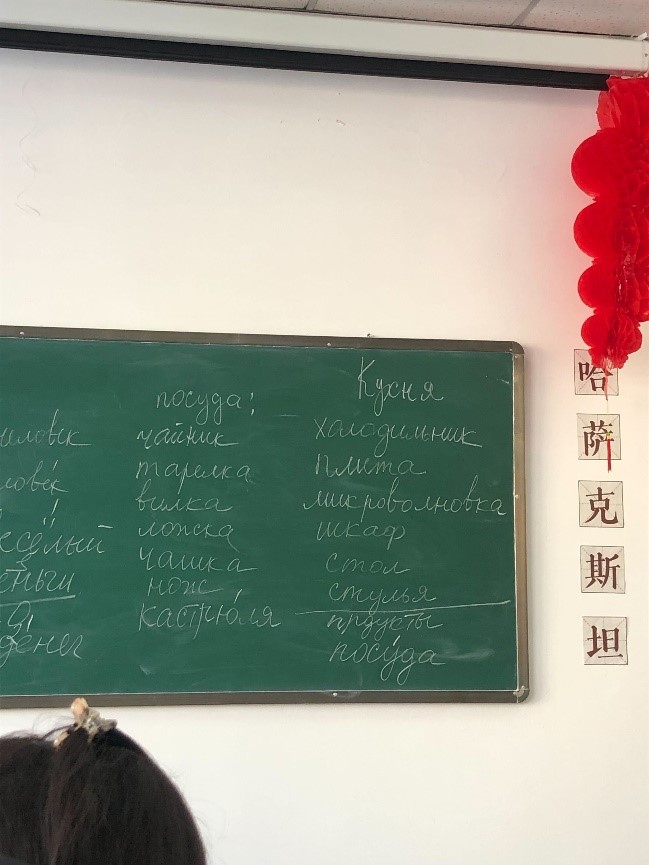
This time, as part of the Russian and Kazakh language training program, I took Russian and Kazakh language classes and a special CiC lecture at Al-Farabi Kazakh National University. Because of the short period of one month, I was allowed to join a group of students who had already begun studying Russian and Kazakh at Al-Farabi Kazakh National University. The group consisted of one Turkish person and the rest were all Chinese. When I asked Japanese students who participated in other groups, it seemed that the majority of students were Chinese, but there were also groups studying with Americans and Filipinos. Their ages ranged from people almost the same age as me to married people in their 30s who had previously worked in the workforce. Lacking a language to communicate comfortably with them, I had few opportunities to ask individuals about their reasons for coming to Kazakhstan to learn Russian and Kazakh. We also were unable to exchange information about our cultural differences. From their attitude toward the class, it seemed that the students who had some experience were more enthusiastic than the younger ones. In any case, living in a country where your native language is not spoken and learning a different language is not an easy task. I somewhat regret that if I had been able to communicate with them outside of class, the training would have been more fruitful. All classes are conducted in Russian, so listening skills will improve considerably. Kazakhs use a mixture of Kazakh and Russian in their daily lives, so the Russian class was an excellent opportunity to develop listening skills. However, since I had not studied Russian, it was quite difficult for me to keep up with the class in the first place. Since many parts of the explanations, such as grammar explanations, were difficult to understand when explained in Russian, Russian texts written in Japanese were utilized. As for Kazakh, due to holidays and CiC special lectures, I could not attend most of the classes, but I started at the beginner level. It will be necessary to make an individual effort to use it in daily life.
4. Interaction with Japanese language learners
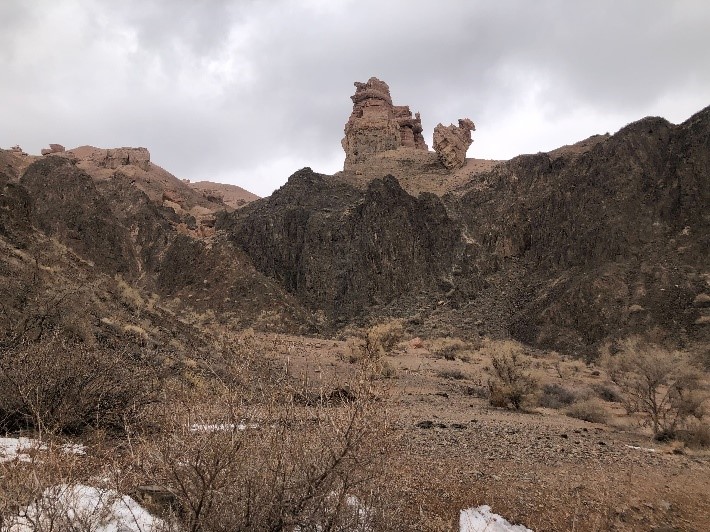
During my stay, I had many opportunities to meet Kazakh people learning Japanese. I received a great support from students majoring in Japanese at Al-Farabi Kazakh National University. They accompanied me on field trips to Charyn Canyon (Photo5) and the Tanbaly ruins, and spoke to me in Japanese. Many of the students spoke Japanese fluently, and I enjoyed the conversation as much as I do when speaking with Japanese students. There were also students who volunteered to hold extra lessons for those who had not yet taken Russian, and students who took us to various places after class. There were many things I couldn’t understand in regular classes, so I was extremely grateful for the extra lessons. They helped me many times when I had trouble understanding Russian. It was very meaningful to have them show us dances, musical instruments, and other aspects of Kazakhstan’s culture.
I also had the opportunity to meet other Japanese language learners at the Japanese speech contest held at Narxoz University. I was impressed by the excellent content and precise Japanese speeches, and the recreational performance of Japanese songs and dances by the Kazakh people was also very entertaining. At the reception that followed, I enjoyed Kazakh cuisine and had fun conversations in both Japanese and English with the Japanese language learners. It was a very meaningful day as I was able to communicate with many people. In particular, a Kazakh Japanese teacher and a second-year high school student who spoke very fluent Japanese decided to go to the zoo together, and I enjoyed communicating with them the next day (Photo6). It is a great pleasure to meet people who are interested in the Japanese language and Japan itself, and if they have a chance to come to Japan, I would like to meet them again and show them around various places in Japan. I feel very fortunate to have had the opportunity to have had these experiences not only during my university classes but also during my training.
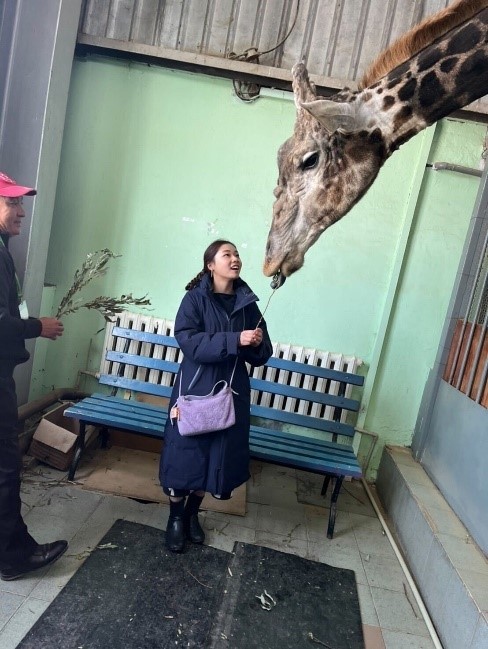
5. Conclusion
It was the first time in my life that I had stayed in a foreign country for more than a month. In particular, spending time in an unfamiliar country where I couldn’t speak the language was an extremely valuable experience. I think I was able to broaden my perspective by experiencing different cultures on a daily basis and thinking about the differences between Kazakhstan and Japan. I would like to use these experiences as a stepping stone to continue to interact with foreigners and live my life with a multicultural awareness in the future.



